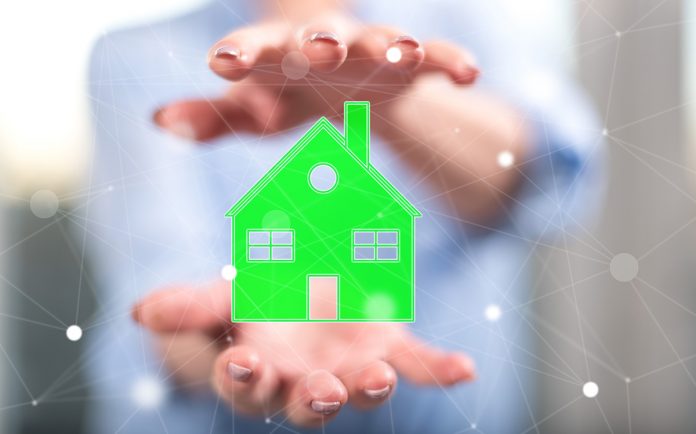Ian Allan, Head of Market Strategy for Switch2 Energy explains how next generation heat networks can help deliver on the UK’s net zero target
There’s no ‘silver bullet’ solution to the urgent and complex heat decarbonisation challenge, but heat networks will play an increasingly important role in the sustainable heating mix – helping to deliver on net zero goals.
The UK government intends to provide at least 18% of heat demand from heat networks by 2050, up from 2% today. District and community heating is also central to the proposed Future Homes Standard. As a proven, mature technology, heat networks can be deployed now to decarbonise homes and businesses where there is a dense heat requirement.
Recycling waste heat
Commercial viability and environmental performance is even better where there are opportunities to utilise waste heat, or access other local heat sources.
The UK wastes more heat than it requires to meet its entire demand, so it’s vital that this ‘lost’ heat is captured and re-used locally. Heat networks provide an effective solution by using heat productively close to the point of generation. It is positive that waste heat is now recognised in EU directives, although it is important that commercial rates and agreements do not get in the way of using waste heat effectively.
Flexible pathway to net zero
Heat networks provide the ultimate flexible pathway to net zero as they can use a range of heat generation solutions, including various heat pump systems or renewable combined heat and power (CHP), or a hybrid solution.
Because heat networks are fuel agnostic, they can be adapted in the future to switch to new fuels and technologies, such as hydrogen. This avoids the need to pick a technology winner – providing a no regret, future-proofed solution.
Gas hangover
The availability of cheap, plentiful North Sea gas slowed the progress of the UK’s heat network sector. By contrast, many European countries, which did not have a ready gas supply, now source up to 90% of heat from renewables. The UK is close to the bottom of the European league table for renewable heat share and must wean itself off gas.
The shift away from gas will cause economic challenges for heat networks. For example, it is currently around six times cheaper to purchase gas than it is to purchase grid electricity (for use in heat pumps). As such, natural gas CHP is a highly cost-effective solution, which means that it is likely to play a continuing role until alternative technologies become more affordable. It is, therefore, essential to optimise CHP and whole network efficiency. There may be potential to convert CHP to run on biofuel or clean hydrogen in the future.
In switching to more expensive lower carbon heat sources, it’s possible to mitigate increased transitional costs by taking a more holistic approach to project delivery. Low-cost solar power can be generated on-site to supply heat pumps, with storage added to optimise the cost of imported electricity. Thermal stores can be added to use heat more cost-effectively, while providing an opportunity to drive revenue from grid balancing services.
Surplus electricity from solar or CHP can also be sold to heat network customers as part of the integrated local energy systems, thus stacking revenues to offset higher heat generation costs. By adding power into the supply mix there is also an opportunity to provide electric vehicle charging.
Optimising efficiency
Heat networks will increasingly move to an integrated local energy system to maximise both the cost and environmental benefits. Procurement begins with a sustainability statement, setting out how the developer will satisfy ‘lean, green and clean’ planning criteria. The choices made at this stage are critical to long-term performance and meeting the triple energy challenge of minimising carbon emissions, balancing costs, and improving resilience.
Building efficiency into renewable heat schemes at the design and planning phases is critical to minimising costs and maximising environmental performance to deliver long term value. It is important to involve operators at the design stages and to partner with a heat network Design, Build and Operation specialist.
Improving efficiency across existing schemes is crucial to driving down emissions and cost, as well as informing the design and operation of new schemes. Switch2’s artificial intelligence enabled Optimise technology is using big data and remote connectivity to gain complete visibility of performance. This is delivering energy savings of 35% on legacy networks. We are also applying this innovative technology for designing, developing, and operating new generation heat networks.
A successful smart heat metering strategy is also key to the efficiency, compliance, and transparency of any project. Smart metering is helping to deliver major performance improvements and will ensure compliance with new requirements for final customer meters under the Heat Network Billing and Metering Regulations.
Heat network support
The UK government has signalled its continuing support for the sector, and we await further clarity from the heat white paper. Pending regulation of the heat network industry will also be critical to long-term success – ensuring that the entire sector adheres to the high operational and customer service standards that we do.
With a coordinated approach to design and delivery and continued government support, the next generation of heat networks can provide affordable and sustainable energy solutions for residents – helping the UK towards net zero.
Switch2 Energy supplies 80,000 residents and 180 clients across 500 heat networks. Its end-to-end service includes heat network design and build, equipment supply, metering, billing and pay-as-you-go, through to scheme operation, maintenance, energy centre management and customer services.
Please note: This is a commercial profile











